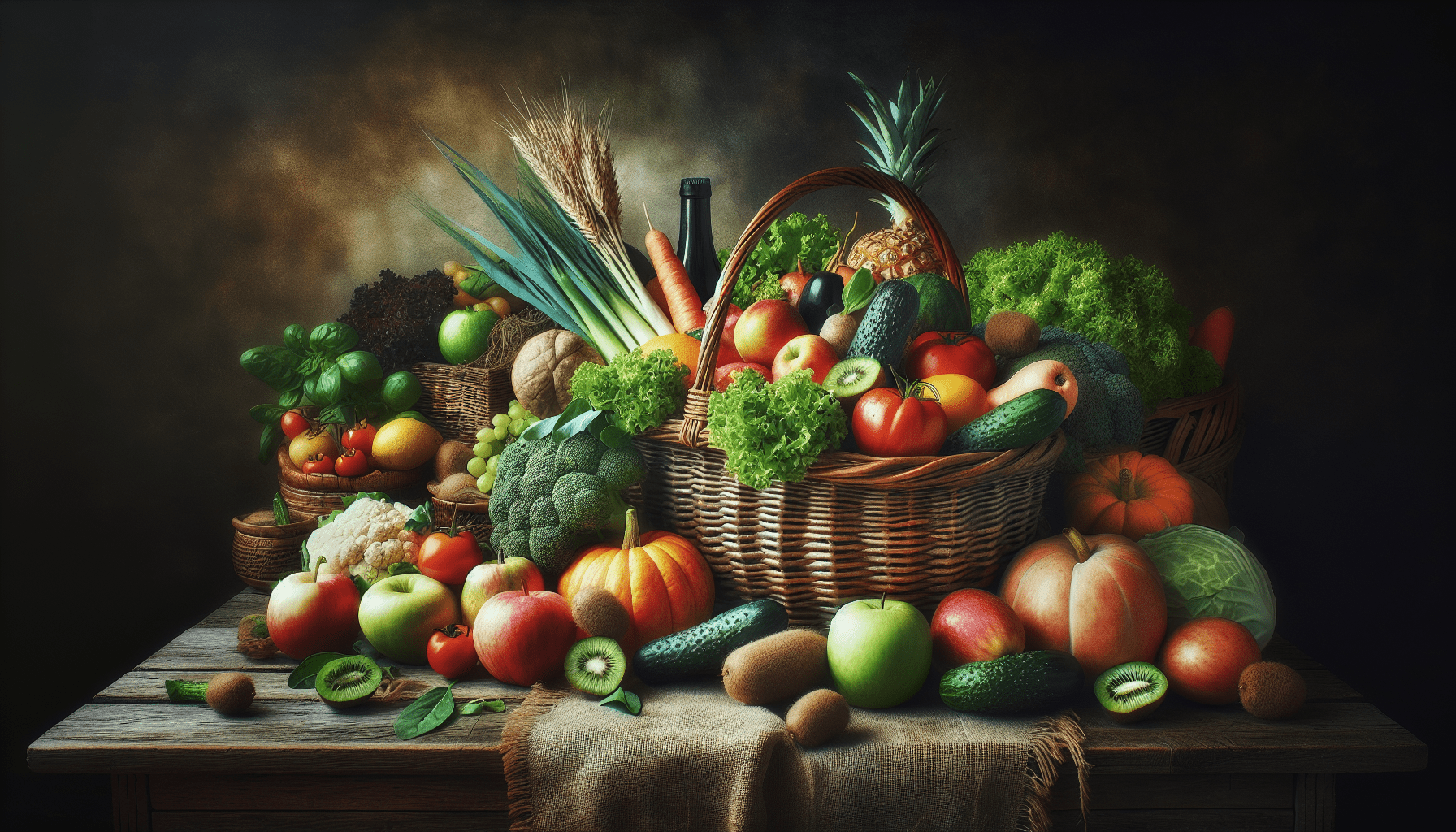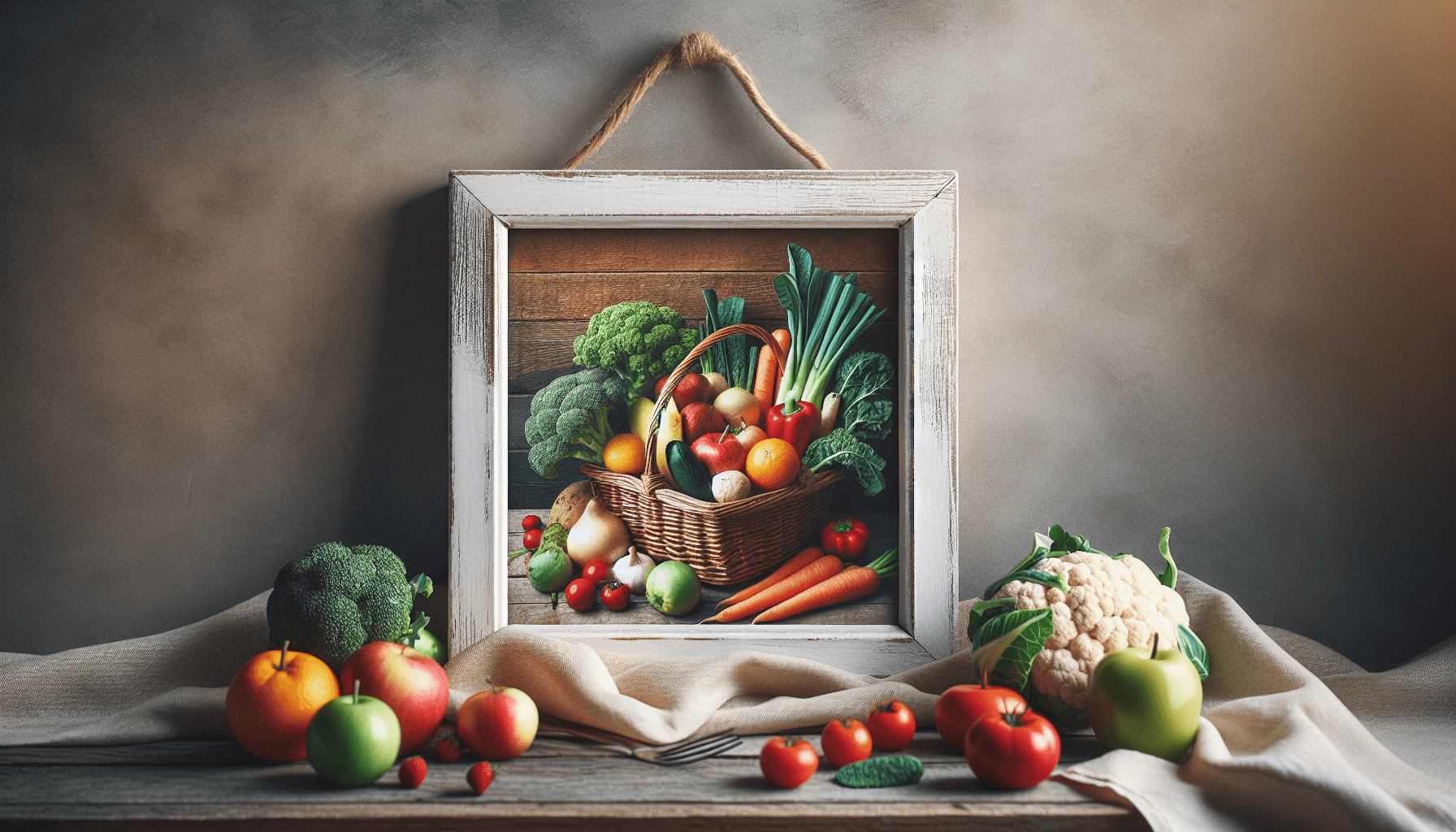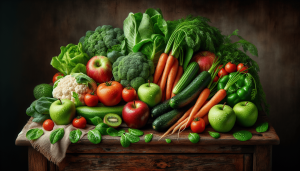How to Store Organic Food to Keep It Fresh
Have you ever wondered how to keep your organic food fresh for as long as possible? With increasing awareness about the benefits of organic produce, many of us have started incorporating more organic foods into our diets. However, a common challenge we face is maintaining the freshness of these perishables. Because organic food often lacks preservatives, it can spoil faster than non-organic alternatives. Fear not, though, because with the proper storage techniques, we can extend the shelf life of our organic groceries while preserving their nutritive value.

Understanding Organic Food and Its Storage Needs
Organic food is cultivated without synthetic pesticides, fertilizers, or genetically modified organisms (GMOs). This means they tend to have a shorter shelf life due to the absence of preservatives. Proper storage is essential to maximize their longevity while retaining their nutrients.
Why Proper Storage Matters
Proper storage preserves the taste, texture, and nutritional value of our organic food. It reduces waste, helping our wallets and the environment. Moreover, it ensures that we always have fresh and healthy options readily available.
General Tips for Storing Organic Food
Temperature and Humidity
Temperature and humidity play crucial roles in how well our organic food lasts. Most organic produce thrives in temperatures between 32-55°F with relative humidity levels of 80-95%.
Avoid Cross-Contamination
Keep organic and non-organic foods separate to avoid cross-contamination. Use dedicated storage areas and containers for our organic foods.
Airtight Containers
Using airtight containers can significantly extend the freshness of our organic foods by limiting their exposure to air, which causes oxidation and spoilage.
Storing Different Types of Organic Food
Vegetables
Leafy Greens
Leafy greens like spinach, lettuce, and kale are best kept in the refrigerator.
| Storage Method | Instructions |
|---|---|
| Plastic Bags | Store greens in perforated plastic bags in the crisper drawer. |
| Damp Paper Towels | Wrap greens in damp paper towels and place them in an airtight container. |
Root Vegetables
Root veggies such as carrots, beets, and radishes can last longer with the right storage methods.
| Storage Method | Instructions |
|---|---|
| Refrigeration | Place them in the crisper drawer. Use perforated bags for better moisture retention. |
| Cool, Dark Place | Storing in a cool, dark place is also an option. Avoid plastic bags as they can cause sweating and rotting. |
Fruits
Berries
Berries are especially perishable and should be stored properly to keep them fresh.
| Storage Method | Instructions |
|---|---|
| Refrigeration | Store in the original container or a breathable container to avoid moisture build-up. |
| Vinegar Rinse | Rinse in a mixture of water and vinegar (1:3 ratio), then dry thoroughly before refrigerating. |
Apples and Pears
Apples and pears can be stored at room temperature, but refrigeration extends their shelf life.
| Storage Method | Instructions |
|---|---|
| Refrigeration | Store in the crisper drawer separately from strong-smelling items. |
| Room Temperature | Keep them in a cool, dry place if not consuming within a week. |
Dairy Products and Eggs
Milk and Yogurt
Milk and yogurt need to be kept in the refrigerator.
| Storage Method | Instructions |
|---|---|
| Refrigeration | Keep them in the coldest part of the fridge, usually the back. |
| Airtight Containers | Transfer to airtight glass containers if not consumed within a week. |
Cheese
Cheese requires both proper temperature and humidity to stay fresh.
| Storage Method | Instructions |
|---|---|
| Wax Paper | Wrap in wax paper, then place in a partially sealed plastic bag. |
| Cheese Drawer | Keep in the cheese drawer or bottom shelf of the fridge. |
Eggs
Organic eggs need special attention for longer shelf life.
| Storage Method | Instructions |
|---|---|
| Refrigeration | Store in their original carton on a middle shelf of the refrigerator. |
Meats and Seafood
Organic Meats
Meats need to be stored at low temperatures to prevent spoilage.
| Storage Method | Instructions |
|---|---|
| Refrigeration | Store in the coldest part of the refrigerator and consume within a few days. |
| Freezing | For longer storage, freeze the meat in airtight wrappers or freezer bags. |
Organic Seafood
Seafood is even more perishable than meat.
| Storage Method | Instructions |
|---|---|
| Refrigeration | Keep in the coldest part of the fridge and consume within a day or two. |
| Freezing | Freeze immediately if not used within two days. |
Grain Products
Bread
Organic bread typically doesn’t contain preservatives, making it more perishable.
| Storage Method | Instructions |
|---|---|
| Refrigeration | Store in the fridge to extend freshness. |
| Freezing | Slice and freeze if not consumed within a week. |
Whole Grains
Whole grains last longer, but proper storage ensures they don’t go rancid.
| Storage Method | Instructions |
|---|---|
| Airtight Containers | Use airtight containers and keep in a cool, dark place. |
| Freezing | Freeze grains to extend their shelf life significantly. |

Nuts and Seeds
Nuts and seeds can go rancid quickly if not stored properly.
| Storage Method | Instructions |
|---|---|
| Airtight Containers | Keep them in airtight glass containers. |
| Refrigeration | Refrigerate to extend freshness. |
Herbs
Fresh Herbs
Fresh herbs are delicate and need special care.
| Storage Method | Instructions |
|---|---|
| Moist Paper Towels | Wrap in moist paper towels and place in a plastic bag in the fridge. |
| Glass of Water | Store like flowers in a glass of water and cover loosely with plastic. |
Beverages
Organic Juices
Organic juices lack preservatives and need to be stored appropriately.
| Storage Method | Instructions |
|---|---|
| Refrigeration | Always refrigerate after opening. |
| Airtight Containers | Transfer to airtight glass containers if original packaging is not resealable. |
Oils and Vinegars
Organic Oils
Organic oils can go rancid quickly if exposed to air, light, or heat.
| Storage Method | Instructions |
|---|---|
| Dark Glass Bottles | Store in dark glass bottles to protect from light. |
| Cool, Dark Place | Keep in a cool, dark place, and always tighten the lid after use. |
Organic Vinegars
Vinegars have a long shelf life but should still be properly stored.
| Storage Method | Instructions |
|---|---|
| Room Temperature | Store in a cool, dark place. |
| Air-Tight Containers | Use air-tight containers to maintain their quality. |
Practical Strategies for Long-Term Storage
Freezing
Freezing is an excellent way to extend the life of various organic foods.
| Types of Food | Freezing Instructions |
|---|---|
| Fruits and Vegetables | Blanch vegetables before freezing; freeze fruits on a baking sheet before transferring to bags. |
| Meat and Seafood | Wrap tightly in plastic wrap, then place in freezer bags. |
| Bread and Grains | Ensure they are well-sealed in airtight bags to prevent freezer burn. |
Drying and Dehydrating
Dehydrating food removes moisture, extending its shelf life.
| Types of Food | Drying Instructions |
|---|---|
| Fruits | Slice and dehydrate using a food dehydrator. |
| Herbs | Air-dry by hanging in bundles or use a dehydrator. |
Canning
Canning is a traditional method that works well for many types of organic produce.
| Types of Food | Canning Instructions |
|---|---|
| Vegetables and Fruit | Follow a canning recipe, ensure jars are sterilized, and use a water bath or pressure canner. |
| Meats | Use a pressure canner specifically designed for meat. |
Common Mistakes to Avoid
Overfilling the Fridge
Overfilling blocks air circulation, which is critical for keeping food fresh. Always allow some space around items for proper airflow.
Washing Produce Too Early
Washing produce right away can sometimes lead to quicker spoilage. It’s usually best to wash right before use, except in cases like berries where a vinegar wash can help.
Ignoring Expiry Dates
While we focus on proper storage, keeping an eye on expiry dates is also vital. Organize your fridge and pantry so older items are used first, minimizing waste.
Monitoring Freshness and Quality
Regularly Check Stored Items
Make it a habit to regularly check the condition of stored foods. Remove anything that shows signs of spoilage immediately to prevent it from affecting other items.
Keep a Storage Log
A storage log can be handy, especially if you freeze or can foods. Record the date of storage and the type of food, so you know when it needs to be used.
Conclusion
By implementing these proper storage techniques, we can significantly extend the freshness and shelf life of our organic foods. It’s all about maintaining the right conditions and using the appropriate storage methods for each type of food. This not only preserves their taste and nutritional value but also reduces food waste and makes our grocery budget go further. With a little effort and planning, we can keep our kitchens well-stocked with fresh, organic foods ready to nourish us at any time. Let’s take these steps and enjoy the full benefits of our organic choices!



